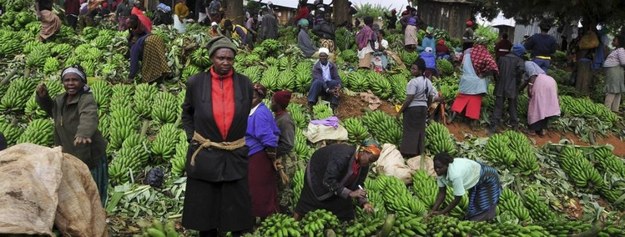Seminář: Dr. Arthur K. Tugume
| Čas |
28.02.2017 od 15:00 do 16:30 |
|---|---|
| Přiložený soubor: | 2017_LS_seminar_01_Tugume.pdf |
| Přidat událost do kalendáře |
|
Unravelling the Mechanisms of recovery of banana plantations from banana Xanthomonas wilt (BXW) infection
Dr. Arthur K. Tugume
Banana provides food and income for over 100 million people in East and Central Africa (ECA). However, by 2022, banana farmers in ECA will lose over US$1.6 billion due to a devastating banana bacterial wilt (BXW) disease. BXW (caused by the bacterium Xanthomonas campestris pv. Musacearum (Xcm)) has already wiped out 100% of household banana farms in some areas of East Africa because the all the banana varieties grown in this region are susceptible. The infected plants develop rapid symptoms of leaf yellowing and wilting, premature and uneven ripening of fruits, and eventually the entire plant rots within 3-4 weeks under field conditions. Therefore, to sustain the future of banana farming, effective strategies to control BXW are urgently needed.

One strategy is to exploit the natural banana “recovery” mechanism to overcome BXW infection. For example, in some parts of ECA, Single Diseased Stem Removal (SDSR) approach was used to remove only the diseased banana plants by cutting at the soil level to successfully rehabilitate BXW devastated banana fields. SDSR approach leads to the recovery of banana mats from BXW. Although SDSR approach was successful, latent infections were observed in recovered mats. Thus, banana plants recover from BXW disease, but also latent Xcm infections incite a re-emergence of BXW in mats that previously recovered from the disease. The mechanisms of banana recovery from BXW is unknown; this leaves gaps in effective application of SDSR and recovery in the rehabilitating BXW-infested plantations. Our hypothesis is that this recovery is due to efficient defence responses activated by banana plants against the bacterium Xcm due following reasons:

-
Colonization and accumulation of Xcm in banana are ‘attenuated’ upon entry of Xcm into the underground corm to a level below the threshold required to cause the disease in lateral shoots.
-
An attack by Xcm in banana triggers defence responses involving reactive oxygen species (ROS), deposition of callose in strategic regions, suberin or other barriers, and increased production of defence metabolites due to a re-programing in gene expression of defence-related genes. Together, these stimulate systemic resistance against Xcm leading to recovery from BXW.
This study has just started (January 2017). It is a 4-year project supported by the Bill & Melinda Gates Foundation under PEARL, implemented under the project “Improving scalable banana agronomy for small scale farmers in highland banana cropping systems in East Africa”.

Kontakty:
- Tel. +256772514841, +256704514841
- Email: aktugume@cns.mak.ac.ug, aktugume@gmail.com
Pozvánka ke stažení ZDE.
Akce dokumentů
